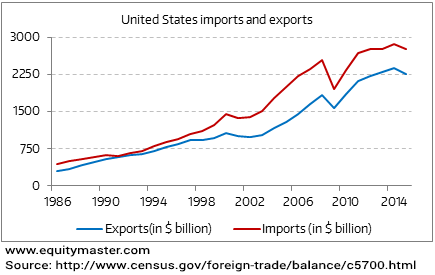- Home
- Todays Market
- Indian Stock Market News April 13, 2017
Indian Indices Trade Marginally Lower; Metal Stocks Witness Selling Thu, 13 Apr 11:30 am
After opening the day marginally lower, share markets in India have continued to trade in the red. Sectoral indices are trading on a negative note with stocks in the metal sector and IT sector witnessing maximum selling pressure.
The BSE Sensex is trading down 36 points (down 0.1%) and the NSE Nifty is trading down 16 points (down 0.2%). The BSE Mid Cap index is trading up by 0.2%, while the BSE Small Cap index is trading up by 0.6%. The rupee is trading at 64.28 to the US$.
In the news from global financial markets, International Monetary Fund (IMF) Managing Director Christine Lagarde reported global economic recovery is gaining momentum.
Further, she reiterated her call for countries to use fiscal and monetary policies to boost demand and structural reforms to make economies more efficient.
However, she warned this momentum could be cut off by protectionism which is presently threatening the global trade.
Speaking ahead of next week's IMF and World Bank spring meetings, Lagarde argued that countries should strengthen the open trade architecture by cooperating multilaterally to solve trade issues such as reducing excessive external imbalances.
The above comments seem to be in response to to the Trump administration's threats to levy new tariffs against trade partners.
One shall note that Trump seems to be against free trade. He agrees on opposition to free trade, opposition to trade agreements, and opposition to importing goods from lower wage countries.
Trump has threatened to put tariffs on Chinese goods and to impose a tax on imports coming into the US. He's also determined to wall off America's border with Mexico. Apart from that, there's also a proposal of 20% tax on imports from Mexico.
The above developments follow Trump's fight over multinational trade as he pulled the US out of the 12 nation Trans-Pacific Partnership (TPP) trade deal last week.
Trump also aims to renegotiate the North American Free Trade Agreement (NAFTA) at an appropriate time. NAFTA enacts a free trade zone between the US, Canada, and Mexico. Trump said that he would move to withdraw from the agreement if no 'fair deal' is forthcoming, pledging to stop trade deals that harm American workers.
To bring down US imports, Trump is planning to direct the Secretary of Commerce to identify every violation of trade agreements a foreign country is currently using to harm the US workers. Currently, US imports more than it exports to other nations. This can be seen in the chart below:
American Imports Exceed Exports
The withdrawal from the NAFTA will not impact India directly, but the resulting adverse currency movements could hurt us. For example, the Mexican peso is under pressure. The falling currency boosts Mexican exports, which could lead to a decline of India's global export market share.
All we can do for now is wait and see how the above developments pan out.
Investors: note that this is a reminder that geopolitical equations and their changing nature deserve attention while taking into account an industry's growth prospects. And within an industry, it may pay well if the investors take care to analyze and give more weightage to companies that are better geared to withstand the impact of such developments in the future.
Moving on to the news from the currency markets... The dollar is trading on a negative note today. Most of the losses came after US President Donald Trump said that the greenback is getting too strong and that he doesn't plan on labelling China a currency manipulator.
As per Trump, the rise in dollar is worrying for US businesses and manufacturers as they won't be able to compete with their global peers. This is because American goods are more expensive relative to European or Japanese products when the dollar's value is too high.
But the above fall in dollar today has further extended the uptrend in rupee. The rupee is scaling new highs against the dollar everyday of late. This appreciation in the rupee comes as a welcome breather for importers in India. It helps importers to buy goods and services at a cheaper rate that earlier. This is vital for a developing economy that relies heavily on imports. So this is a good indication for the Indian economy as higher imports normally mean increased economic activity.
However, on the other hand, the rise in rupee has spelled trouble for exporters. The exporters are at a disadvantage owing to the currency appreciation as this renders their produce expensive in the international markets as compared to other competing nations whose currencies haven't appreciated on a similar scale. This tends to take away a part of the advantage from Indian companies, which they enjoy due to their cost competitiveness.
While there are advantages as well as disadvantages of a rising rupee, one needs to understand whether the rise in the rupee is sustainable to derive any reasonable conclusion at this stage.
For one, the weakness of the US dollar is largely due to the relative unattractiveness of US assets. This partly is due to a very low interest rate regime prevalent in the US economy. Already there are indications that this low interest rate regime may not be sustainable for long. This means that US interest rates may go up and this may likely strengthen the US dollar.
For information on how to pick stocks that have the potential to deliver big returns, download our special report now!
Read the latest Market Commentary



Equitymaster requests your view! Post a comment on "Indian Indices Trade Marginally Lower; Metal Stocks Witness Selling". Click here!
Comments are moderated by Equitymaster, in accordance with the Terms of Use, and may not appear
on this article until they have been reviewed and deemed appropriate for posting.
In the meantime, you may want to share this article with your friends!